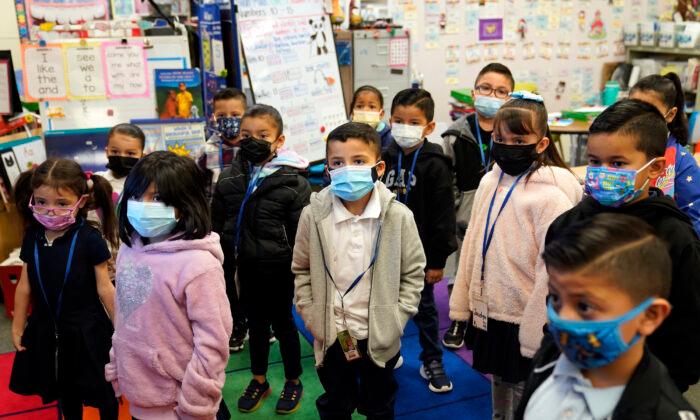Many school districts across the nation could be required to return millions of dollars to the U.S. Treasury if they don’t spend their remaining post-COVID relief grant money within 30 days, according to federal data.
The $122 billion program aimed to boost learning recovery in the wake of the pandemic, partially rebuild the educator workforce, and help schools operate safely. The Edunomics Lab previously reported that most of the money was spent on labor, including additional teachers, counselors, classroom aids, tutors/reading coaches, subject area specialists, and administrators.
According to data released by Edunomics Labs on Aug. 22, nine districts have yet to submit for reimbursement for more than $30 million of previously granted ESSER funds.
Districts can request additional time to spend down the money if the U.S. Department of Education approves the expenditure prior to Sept. 30. Liquidation extension requests are due Dec. 31.
The smallest of the nine districts on the $30 million plus unspent list, Syracuse city in New York, has used 68.4 percent of its allocation, or $74.45 million out of $108.86 million. The largest district, Clark County in Nevada (Las Vegas area), so far spent 95.4 percent of its ESSER money, or $1.15 billion out of $1.20 billion. Neither district replied to a request for comment from The Epoch Times.
Milwaukee Public Schools (MPS) in Wisconsin has spent $570.22 million of its total $786.41 million allocation, or 72.5 percent, according to the Edunomics Lab.
All told, MPS spent its ESSER money on providing Chromebooks for students, upgrading athletic facilities, tutoring services, learning camps that took place when school wasn’t in session, mental health services, afterschool clubs, free sports physicals, and free drivers’ education classes, said Stephen Davis, MPS media relations manager, in an Aug. 30 email response to The Epoch Times.
As for the amount currently listed as unspent, he added, contracts and purchase orders for goods and services have been approved, so the district is authorized to make final payments on those items several months from now.
“MPS is on track to spend the entire budget,” he said.
Hillsborough County Public Schools in Florida received $766.23 million. The data indicate that 85.3 percent of that amount has been spent. Tanya Arja, district chief of communications, said $24 million of the remaining money has gone to charter schools whose expenditures don’t require authorization from the district office.
Arja said the district’s current unallocated amount, $19 million, will go toward curriculum, school supplies, and information technology improvements that are expected to be approved by both the Board of Education and the U.S. Department of Education in the coming weeks.
“This will ensure all district funds will be obligated by Sept. 30 and liquidated by November. We do not plan on sending anything back,” Arja said in an Aug. 30 email response to The Epoch Times.
The Dallas Independent School District (DISD) has spent $566.15 million of its $846.78 million total allocation, or 66.9 percent, according to the data. However, unlike the other districts with unspent money, DISD’s remaining balance is attributed not to the last phase of ESSER but to the first two phases: $12.41 million of $61.98 million for phase one, and $49.32 million of $241.73 million for the second phase.
DISD officials replied to The Epoch Times’ request for comment and, noting that a new chief financial officer is still onboarding, said further information will be provided at a later date.
The other districts with remaining balances above $30 million include Minneapolis, with 62 percent of $249.40 million; Newark, New Jersey, with 83.4 percent of $277.08 million; DeKalb County, Georgia, with 76.7 percent of $486.57 million; and Stockton, California, with 79.6 percent of $241.56 million. Representatives from those districts did not respond to The Epoch Times’s request for comment.
“With one month left on this 42-month grant, many districts are cutting it close,” the news release said. “Is it worth spending ESSER down to the final penny? Depends on who you ask. Spending for the sake of spending can seem wasteful. Besides, isn’t $1,000 just a rounding error in a budget of millions?” it said.
“Then again, try telling a kindergarten teacher that you send the money back instead of replacing that dirty old circle-time rug that little Sophia threw up on last week. Or the PTA chair who spent countless hours getting the kids to sell chocolate to pay for honor roll prizes.”






